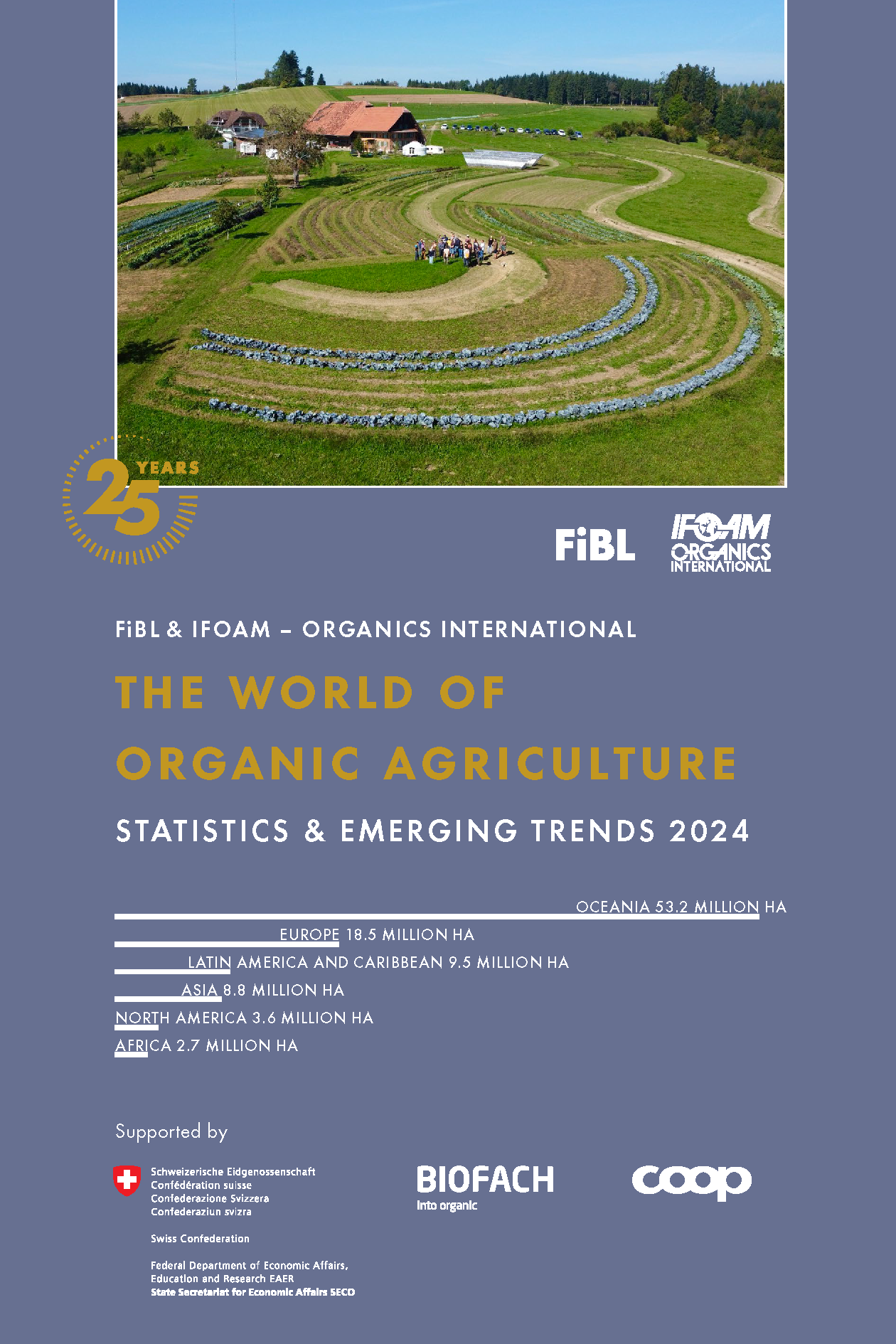Agroecology and organ agriculture present promising alternatives to the current food system, supported by a growing body of evidence. Despite the potential of AE/O, their full benefits cannot be realised in most countries due to political and institutional barriers and lock-ins, including incentives and funding that favour “business as usual” food systems. Overcoming present and future challenges will require educated and empowered stakeholders to support AE/O agriculture in their fields.
FIBL and IFOAM (2024) The World of Organic Agriculture 2024. Statistics and Emerging Trends #352 p.
This book offers a comprehensive review of recent developments in global organic agriculture. It presents detailed statistics on organic farming that relate to area under organic management, land use and crops, the number of farms and other operator types, retail sales and international trade data.
The book includes contributions from representatives of the organic sector from around the world about the global market for organic food, organic imports, regulations and policies. It offers insights into current and emerging trends in organic agriculture in Africa, Asia, Europe, Latin America, North America, and Oceania and reports on several countries.
Related:
29/02 Soil is a Womb by Mr Samuel Nderitu - Grow Biointensive Agriculture Center of Kenya



No comments:
Post a Comment